By Major General Michael Reynolds
By the end of April 1945, two of the most feared divisions of the Waffen-SS, the 1st SS Panzer Division Leibstandarte Adolf Hitler and the 12th SS Panzer Division Hitlerjugend, had both been reduced in strength to little more than reinforced regiments. As a result, they were being forced to operate as a single, coordinated entity rather than as two separate divisions.
The Leibstandarte had been in action almost constantly since September 1939. The Hitlerjugend, formed on Hitler’s order in June 1943, had joined the Leibstandarte in Normandy to form I SS Panzer Corps under the command of one of the führer’s favorites, Sepp Dietrich, and as such these powerful divisions fought throughout that campaign and then went on to lead Hitler’s last offensive in the West—the 1944 Ardennes offensive, better known as the Battle of the Bulge.
In March 1945, I SS Panzer Corps, then under the command of SS General Hermann Priess, led the last German offensive in the East, only to find itself engulfed in the final Soviet offensive on that front, an offensive that would take the Red Army to Berlin and the Austrian Alps. Not surprisingly the bitter fighting in the last year of World War II had exacted an appalling toll on the strength of the Leibstandarte and Hitlerjugend, and after the withdrawal from Hungary into lower Austria and the fighting in the Vienna Woods neither division was capable of taking serious offensive action.
The last period in the history of the only divisions to bear Hitler’s name is particularly fascinating because it demonstrates how, even in the most chaotic and demoralizing circumstances such as those in lower Austria at that time, highly motivated, well-trained soldiers, led by commanders whom they respected, were able to reach levels of military performance to which modern armies can only hope to aspire. The actions of first one division and then the other made it possible for both to withdraw through incredibly difficult terrain, so that both survived to reach safety—even if that safety meant surrender and captivity. It also has to be said that fear of falling into the hands of the Red Army was a highly motivating factor in the performance of I SS Panzer Corps.
The final withdrawal into the Alps from positions south of the road running from Berndorf in the east to Rotheau in the west in lower Austria began on April 22 with two Kampfgruppen (KGs) of Otto Kumm’s Leibstandarte pulling back to temporary positions in the mountain valleys on the south side of the Traisen–Hainfeld road. One withdrew through Lilienfeld toward Türnitz and the other toward Kleinzell and Ramsau.
Meanwhile, the men of Hugo Kraas’s Hitlerjugend Division struggled to hold on in the Triesting valley between Hainfeld and Weissenbach to allow the other KGs of the Leibstandarte to move back toward Furth and Pernitz. SS Second Lieutenant Borchers described the withdrawal of parts of KG Peiper and Siebken’s 2nd SS Panzergrenadier Regiment from Hainfeld: “We defended the town with three panzers…. Mortars, anti-tank guns and rifle fire would allow us no rest. After the town exchanged hands several times, scarcely a house remained standing….We took up positions 1,000 meters south of the town. The Russians attacked them immediately. The enemy left his dead behind but threw us out of these positions.”
SS Dr. Knoll, a captain, talked later of the withdrawal of his aid station: “Redeployment to Kleinzell … Regimental Aid Station: Kalte Kuchl: one dead, cause of death—hunger! … [Colonel Joachim] Peiper’s command post attacked. We still have three Mk IVs and two 20mm flak guns. Revolting diarrhea.”
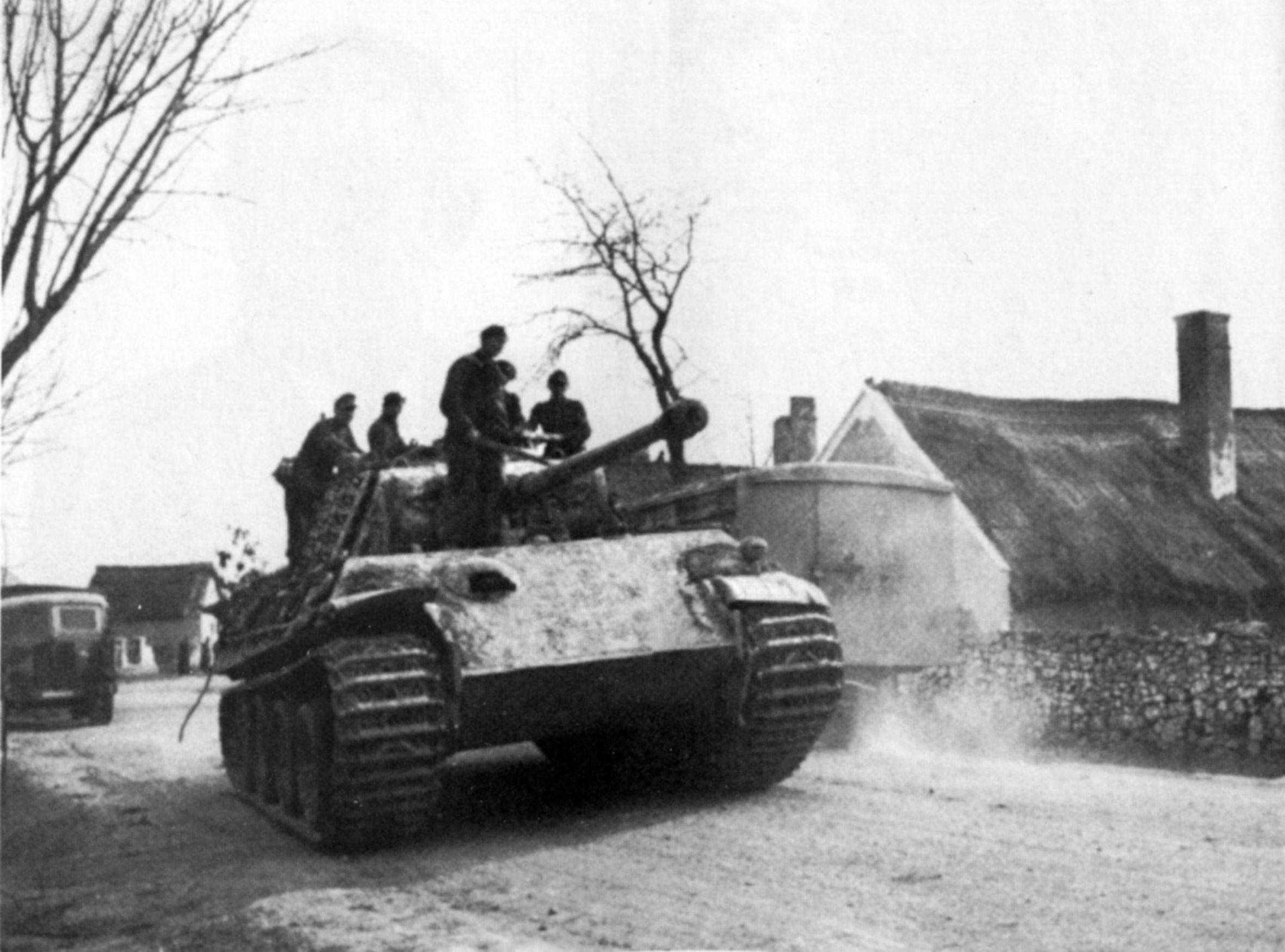
SS Lieutenant Stiller also told how his company reached safety during the night of the 23rd: The Company was completely exhaust…. Pernitz was reached at 0600 hours in a forced march through the [mountains]….The Russians fired on Pernitz from the … hills. The company continued the march and reached Gutenstein at 0900 hours. Assembled trucks transported the exhausted men through Rohr and Kalte Kuchl to Hölle. The Company’s night camp was a barn with tree branches as straw. It was bitterly cold.”
Otto Kumm’s Divisional Headquarters in Weissenbach found itself unable to pull out through Hainfeld as originally planned and was forced to withdraw through the mountains. By the 24th the Leibstandarte had established some semblance of a defensive line running from Lilienfeld in the west through Kleinzell and Ramsau, and then across the mountains to the Pernitz area. This allowed the battered Hitlerjugend KGs to withdraw into the mountains on the south side of the hated Triesting Valley. Late on the 23rd, the Soviets occupied the Weissenbach–Pottenstein sector.
On April 25, while the Hitlerjugend defended the line from Ramsau toward Furth and then south toward Pernitz, the Leibstandarte began the construction of a new alpine defensive position running from Rohr northwest to Lilienfeld. Most of this ground is well above 1,000 meters and lay under packed snow. The chronicle of the Leibstandarte flak battalion recorded, “The withdrawal became more dramatic from day to day. Through Pernitz– Gutenstein–Rohr–Kalte Kuchl into the Halbach valley [running toward Kleinzell]. The last 37mm guns took up the outer defense while the infantry battle groups occupied the mountain positions. The enemy tried to penetrate … into the Halbach valley but he was forced back by a counterattack…. Attacks by enemy infantry were stopped by banging cooking pots together and making cracking noises that echoed in the mountains. This saved ammunition…. One 88mm gun that was manhandled into position … in the Halbach valley was able to effectively engage the Soviets on the opposing mountain ridges. The remaining three 88mm guns … engaged Soviet assembly areas east of Kalte Kuchl with direct fire.”
Werner Sternebeck, commanding a Mk IV tank group, described what it was like for the few remaining tanks. “We were being compressed in the [Halbach] valley. Only one tank had a field of fire, so we were more and more vulnerable to enemy infantry. It was a desperate, nerve-wracking and ultimately hopeless battle without chance of success.”
By last light on the following day, the new defensive line was considered sufficiently organized, and orders were issued for the Hitlerjugend to begin its withdrawal to the Tradigist area where it was to reorganize and then take over in that sector from the 10th Parachute Division. This would place the Hitlerjugend on the Leibstandarte’s left flank and create a continuous I SS Panzer Corps front running from Rohr northwest through Lilienfeld to Rabenstein.
The Hitlerjugend withdrawal started at 9:30 pm and, after appallingly difficult foot marches, the weary soldiers finally reached the road leading to Rohr and Hohenberg where trucks waited to take them back to the new assembly area.
On the 27th and 28th, the Hitlerjugend reorganized while the Leibstandarte continued to ward off Soviet patrols and probing attacks. The fighting was limited but ferocious when it did flare up. One senior sergeant reported, “Our platoon strength was four NCOs and 23 [soldiers]. There was fierce fighting against two Russian companies in the early morning. Losses: three killed, two missing and 17 wounded. After the battle, which was sometimes conducted hand to hand … our platoon had a strength of one and four…. I was wounded.”
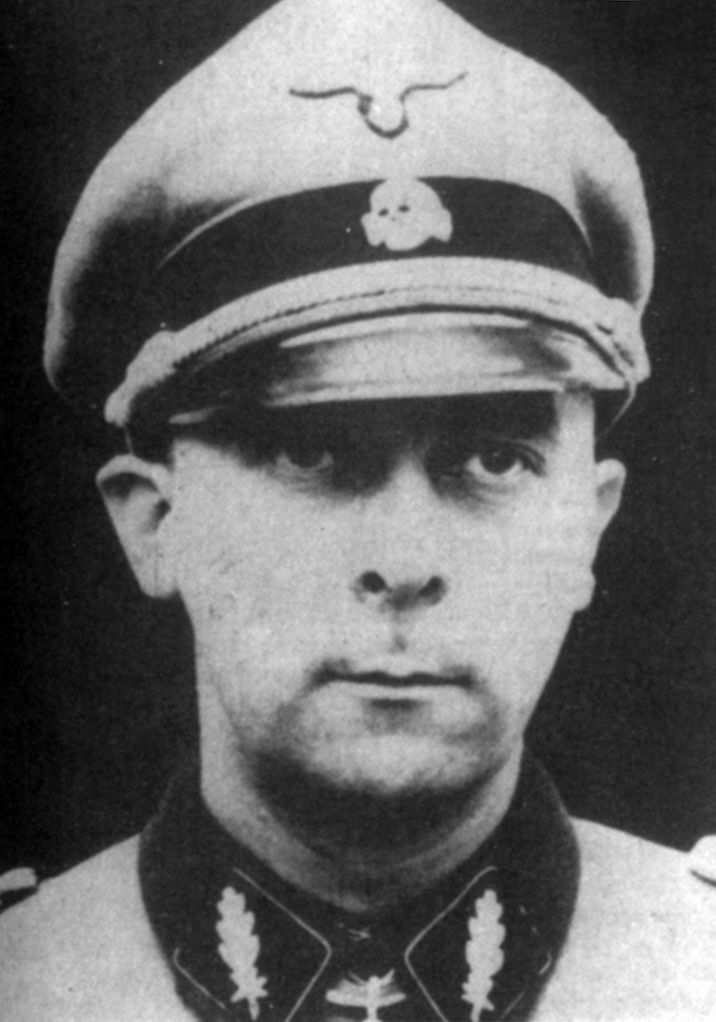
Sternebeck said later that his tanks were withdrawn since there was no longer any ammunition. He went on to comment, “Everyone was fighting for bare survival in order to escape falling into Soviet captivity…. Comradeship, trust, obedience and even loyalty existed only where people knew each other.”
The “little war in the mountains,” as Ralf Tiemann, chief of staff of the Leibstandarte, described the last days of the war in his History of the Leibstandarte, could not have been more unpleasant. The Russians used loud speakers to encourage the Germans to desert, the weather was bitterly cold, and there was a desperate shortage of food.
To counter the Russian propaganda, Dietrich issued a special Order of the Day which included, “Our Fatherland is in great danger…. Is there one among you who does not have a personal reckoning to settle with the unbridled hordes coming from the Kremlin? You are the guardians of the Reich, the avengers of all the horrors inflicted on our people, the shield bearers and defenders of a thousand-year military tradition…. Long live Germany! Hail our Führer!”
There was no answer to the cold and hunger. SS Second Lieutenant Stiller recalled, “The weather and the hunger were allies of the Russians. The men lacked any protection from the cold. Their bodies heated the earth bunkers…. Our sector had to be carefully controlled. Ivan was not as tired as us and at night we had no contact with our neighbors. In addition the snow muffled all sound.”
Meanwhile, during the 27th and 28th the Hitlerjugend completed its move to the Tradigist valley, a naturally protected and dramatically beautiful area, and began to reorganize into its formal regiments and battalions.
The divisional chief of staff wrote, “Replacements which had arrived were incorporated. Wounded men returned to their units from the hospitals. Some, who had not fully recovered, ‘discharged’ themselves since they preferred to be with their units. After a period of rest, the weapons were cleaned and uniforms repaired. Since renewed action was in the future, the replacements were trained in the field and prepared through lectures. The commanders and unit leaders recced the 10th Parachute Division sectors assigned to them.”
The relief of the paratroopers took place during the 29th, and by last light the new corps front of some 25 kilometers was complete. In the end the new sector saw little activity, and to all intents and purposes the war was over for what was left of the twin divisions.
The news of the Führer’s death reached the men of I SS Panzer Corps on May Day in various ways. One SS lieutenant told his men, “Comrades, the Führer is dead. We will continue to fight here on the front. We have received orders from our Standartenführer [Colonel] Max Hansen, to defend our positions tenaciously until all rear area elements—the aid stations, hospitals, the last elements of the fleeing population—reach security from the attacking Russians. This is an honorable mission!”
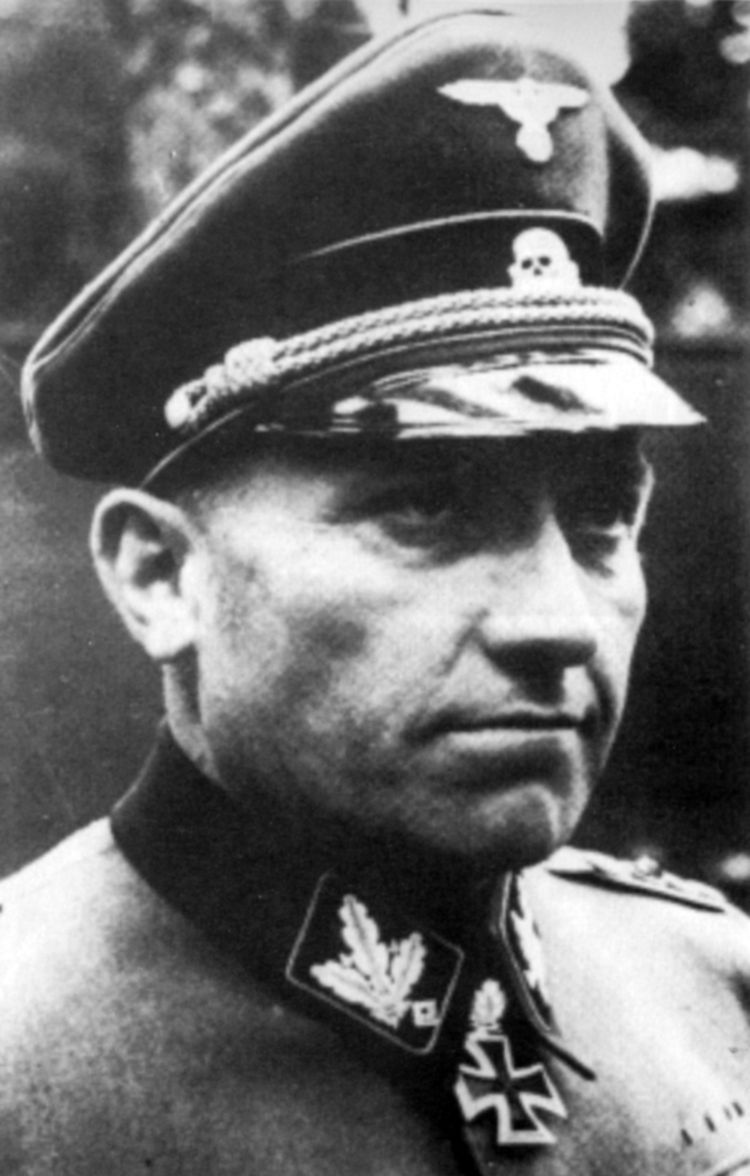
Lieutenant Stiller remembered, “We had a new commander-in-chief [Admiral Dönitz]. The Company learned of the führer’s death from battalion. The reaction? Rumors of a cease-fire with the Amis [Americans]. The men endure everything.”
Most of the soldiers had no illusions. As a survivor of the Leibstandarte’s Reconnaissance Battalion said later, “We heard on the radio about the catastrophe in Berlin and the death of the führer. Dönitz spoke words of encouragement, but we knew that our hour of defeat had arrived. Everyone had only one desire—to reach the American lines as quickly as possible.”
Hitler’s death was certainly seen as a catastrophe by the older and more senior members of the corps, the ones who, before the war, had stood close to their leader in the Chancellery and at the Berghof. Their relationship had always been special. As Hubert Meyer, chief of staff of the Hitlerjugend, put it, the news “moved them deeply.”
The following day the Hitlerjugend was ordered into Sixth Panzer Army reserve in the Kilb area. While the battalion of Rudolf von Ribbentrop, son of Nazi foreign minister Joachim von Ribbentrop, remained in position to cover the withdrawal, the rest of the division pulled out during the night of May 2. The last battle had been fought. The campaign on the Eastern Front in 1945 had cost the Hitlerjugend 4,376 casualties, of which 1,498 were dead, including one regimental and seven company commanders. Thirty-two Mk IV and 35 Panther tanks had been lost, as well as 20 guns, howitzers, and heavy mortars. What was left? Nearly 10,000 men and, according to Meyer, six Mk IVs and nine Panthers combat-ready, as well as 37 guns, howitzers, and heavy mortars.
At the same time as he ordered the Hitlerjugend into reserve, the corps commander ordered all nonoperational elements of the Leibstandarte to be withdrawn from the forward positions and assembled in the Türnitz and other adjacent valleys. This included all transport, repair, supply, and medical units and heavy weapons without ammunition. For those who remained in the forward strongpoints it was an agonizing time.
On May 7, the commander of the Sixth SS Panzer Army, Sepp Dietrich, who had lost touch with his superior at Army Group South, on his own initiative ordered the Hitlerjugend to move into a new assembly area to the southeast of Amstetten. At the same time, Hubert Meyer was told to report to his opposite number, Fritz Kraemer, at Headquarters Sixth Panzer Army, located 10 kilometers west of Scheibbs. Dietrich was not present. Meyer was told that General Alfred Jodl, chief of staff of the German high command, on behalf of Admiral Dönitz, had offered the surrender of all German armed forces at Eisenhower’s headquarters in Reims and that the necessary document had been signed at 2:41 that morning. Hostilities were to cease at midnight on May 8, and by that time all troops had to be across the demarcation line between the Americans and the Soviets. That line was the Enns River.
Kraemer went on to thank Meyer, on behalf of Dietrich, for the outstanding actions of the Hitlerjugend and told him to offer the surrender of the division to the Americans at Steyr that afternoon.
Meyer described the afternoon’s events in his History of the Hitlerjugend. “A narrow lane had been opened up through a minefield, marked with white tape. An American jeep guided the car to a sentry at the entrance to a factory…. Pistols were handed over. [He and an orderly officer] were driven into the city in an American jeep with an escort. It stopped in front of a hotel in the market square…. The American guard at the entrance said in German: ‘Don’t worry, everything will work out!’ The negotiators were led into a room on the first floor. In its center stood a large table covered with maps. There was no other furniture in the room. Three or four American officers were sitting on the floor. A staff officer stood up and [Meyer] was requested to indicate on the map where the division was located. Then came the question: How many men did the division have? The answer: ‘Ten thousand’ was taken in with great delight by the officers sitting on the floor. Bottles and glasses standing around gave an indication that the victory had already been celebrated. That was understandable but it was deeply painful to the negotiators.”
The American staff officer announced the conditions for surrender: “The Division will cross the demarcation line in the Upper Austrian city of Enns on the Enns river on 8 May 1945, from 0800 hours to 2400 hours. Anyone arriving later will go into Russian captivity. All weapons will be unloaded 2km from the river, small arms are to be removed. The ammunition for tanks and guns will follow behind them on trucks. The tanks will point their guns in the air. All vehicles will have to fly white flags.”
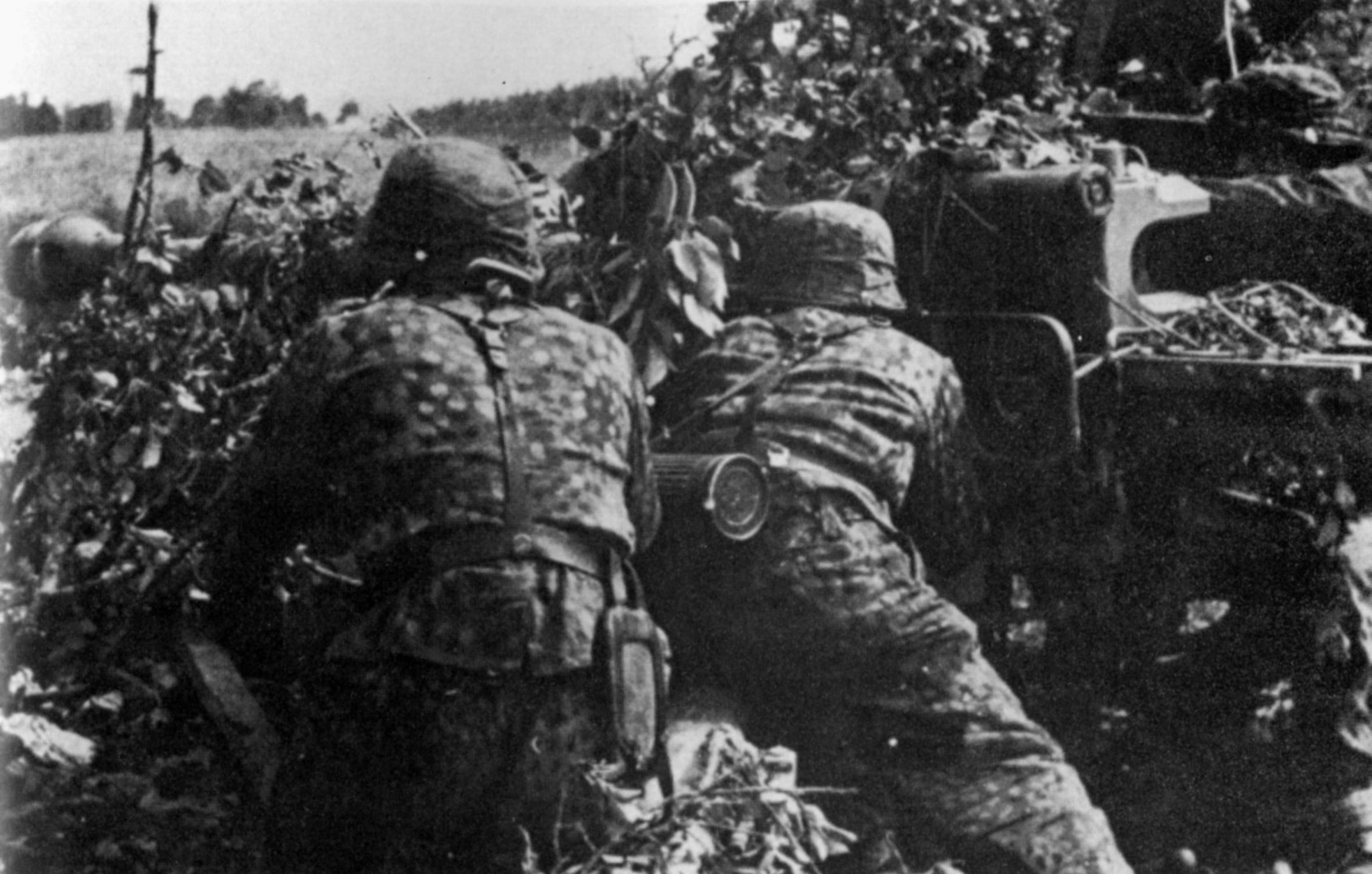
After Meyer had reported, his divisional commander summoned his commanders to give them the news and conditions. After ordering that white flags would not be flown, Kraas made a speech in which he thanked every member of the division for their valor and loyalty and asked that in memory of their fallen comrades they should maintain their spirit of camaraderie during captivity and during the rebuilding of the destroyed Fatherland.
He closed with these words: “We set out on the bitterest journey of our life as soldiers with our heads held high. In quiet composure, we will march toward our destiny. We have fought bravely and with integrity in all theaters of war—but still the war is lost. Long live Germany.”
Meyer continues his description of the final hours. “On the morning of 8 May 1945 at 0430 hours, SS Major General Hugo Kraas and SS Lieutenant Colonel Hubert Meyer drove with the operations staff and the divisional escort company via Amstetten to Enns…. They stopped approximately one kilometer from the river where the road leads down from the ridge. Along both sides of the road were deep gravel pits. At the left edge of the road [there was a high embankment on the right] stood the divisional commander, his adjutant and his chief of staff, awaiting the approach of the divisional columns. The escort company buried its weapons in the gravel pits…. The commanders reported their units and the troops marched past, mounted, as if on parade, with perfect bearing.”
Suddenly, a few Wehrmacht vehicles came out of Enns. Sitting on them were former prisoners from the nearby Mauthausen concentration camp with weapons at the ready. They drove along the column and started looting the vehicles. To prevent further abuse a Panther was parked in the left lane so that no more vehicles could drive down the column.
It is perhaps ironic that the Hitlerjugend Division was required to surrender at the bridge closest to Mauthausen (eight kilometers away) and was forced to ask for protection from the former inmates. Could one be forgiven for suspecting that this was a carefully thought-out scenario on the part of the Americans? Only nine days previously their troops had overrun the infamous camp at Dachau and, in an outburst of anger at what they found, they had summarily executed 21 guards, including 17 SS men.
Mauthausen was one of the first concentration camps, and some 195,000 men and women were imprisoned there and its sub-camps between August 8, 1938, and May 5, 1945. More than 105,000 of them died. According to today’s Austrian authorities, when the SS guards fled on May 3, there were 68,268 inmates including 1,734 women, four British and two American citizens. Another 81,000 prisoners were liberated by American troops from the sub-camps and other concentration camps in upper Austria.
By last light on the 8th, most of the Hitlerjugend had crossed the Enns and made camp in the fields close to Enns. Vehicles, guns, and tanks were parked separately, and lines of American sentries guarded the men. Von Ribbentrop’s battalion was the last to cross the river, just before the midnight deadline, and individual stragglers who were late were turned back. Those who were able swam across the river farther south or found other crossing places.
Altogether, 9,870 men, including 328 officers and 1,698 NCOs, surrendered to the U.S. 65th Infantry Division. They were only just in time—at 6:45 pm three Soviet officers from the 7th Guards Airborne Division arrived at the American headquarters. The leading elements of their division were only 20 kilometers east of Enns.
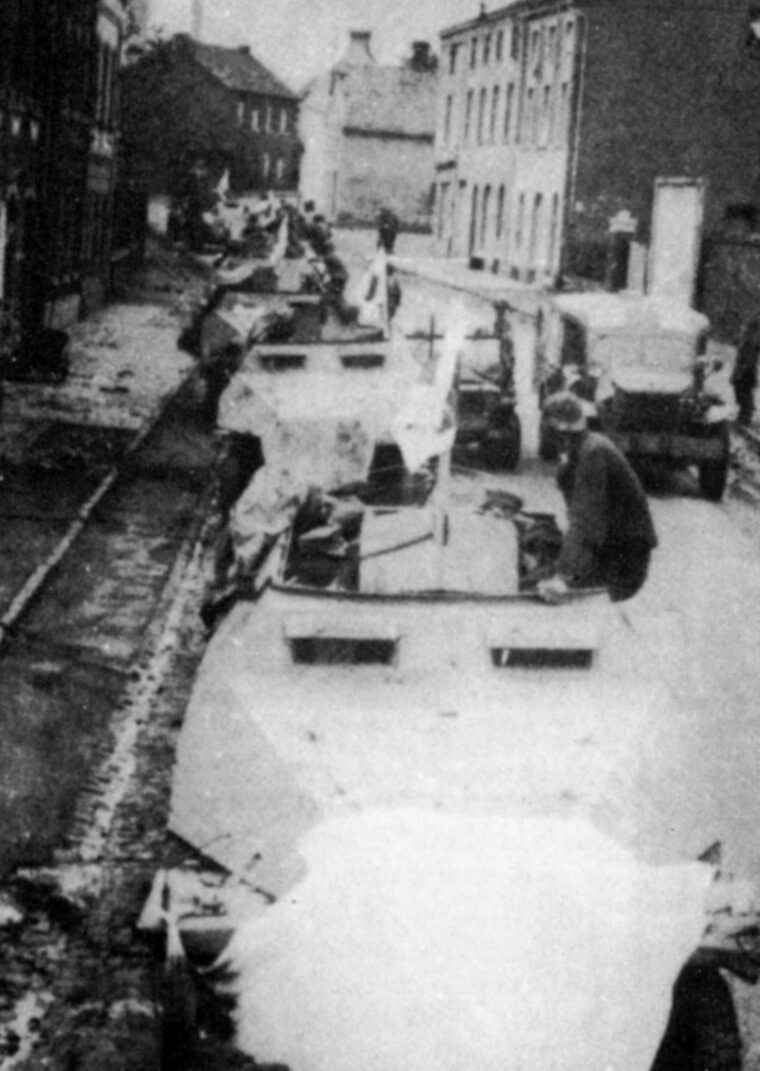
And what of the Leibstandarte, which had been given the unenviable task of covering the withdrawal of much of the Sixth Panzer Army? Unbelievable as it may seem, it was still receiving new equipment. On May 2, some 40 members of the 501st Heavy SS Panzer Battalion were sent to a depot near Enns with the task of making six Jagdtigers operational; and on the afternoon of the 7th, men of the 7th SS Panzer Company received orders to pick up four brand-new Mk IVs from Kirchberg. Two of the Jagdtigers reached the Leibstandarte command post at Scheibbs, but one was immobilized and the other used as a roadblock near Waidhofen; the Mk IVs were eventually “scuttled” in the Enns.
During the night of May 7, the men in the forward positions received their orders. They were to assemble southeast of Scheibbs and then move via Waidhofen to the Enns River, 18 kilometers southwest of that town. From a schoolhouse near Scheibbs, Joachim Peiper sent his last message as a free man: “The dream of Empire is over! Tonight, with Guhl [commander 2nd SS Panzer Battalion] we face the last enemy.”
A senior sergeant in Siebken’s regiment remembered, “I experienced a spontaneous feeling: there were still Russians to the right, to the left and in front of us—maybe even behind us? Could we expect fairness from the Americans? We suddenly had to think about our fallen comrades, relatives, the columns of refugees and the victims of the bombs. Unconditional surrender made everyone wordless. If yesterday, with gallows humor, we had sung ‘Everyone forward’, today we are all quiet.”
Fear of Russian captivity was now being supplemented by uncertainty about American intentions, but few if any members of I SS Panzer Corps anticipated the hatred felt by all Allied troops for the Waffen SS. The Germans would complain repeatedly and endlessly that they had never been anything other than combat soldiers and had no knowledge of extermination squads and concentration camps. They had yet to come to terms with the fact that anyone who wore SS runes was seen by Allied troops as part of a diabolical machine that had caused endless misery and countless deaths—as a barbarian who deserved to be treated as such. The members of the Waffen SS would soon discover, to their intense shock, that the Americans had no intention of extending to them the honors and courtesies applicable to normal prisoners of war.
Disengagement from the forward area was accomplished without difficulty and, after five years and eight months of war, the 1st SS Panzer Division began its march into captivity. Among the many dead left behind in Hungary and lower Austria were at least four battalion and 11 company commanders. Heavy weapons and equipment were destroyed en route, and some armored vehicles were driven into the Enns River. But unlike the Hitlerjugend, which had moved toward captivity as an organized military force, the Leibstandarte found itself split into units of varying size and competing with countless refugees and Wehrmacht personnel to make the midnight deadline.
SS Lieutenant Pulvermüller described what happened to his 4th SS Artillery Battery. “We drove off by ourselves and blew up the six guns—these were the only ones—at a quarry…. A Panther was standing on the road. It used its last drops of fuel to roll into the quarry. We filled it with grenades and ammunition and blew it up with the guns as best we could. Then we moved out to the west in small groups.”
The congestion in the Enns valley between Waidhofen and Steyr caused by the refugees and other fleeing troops soon brought the Leibstandarte columns to a complete stop, and it became obvious that few of the units would be able to cross the demarcation line at Steyr by midnight.
The commander of the 1st SS Panzerjäger Battalion, Karl Rettlinger, told of what happened to his unit. “The roads were hopelessly jammed, so the men left the vehicles and reached the Enns on foot. I came upon a footbridge. Peiper and his staff were also there. We crossed the Enns and entered captivity.”
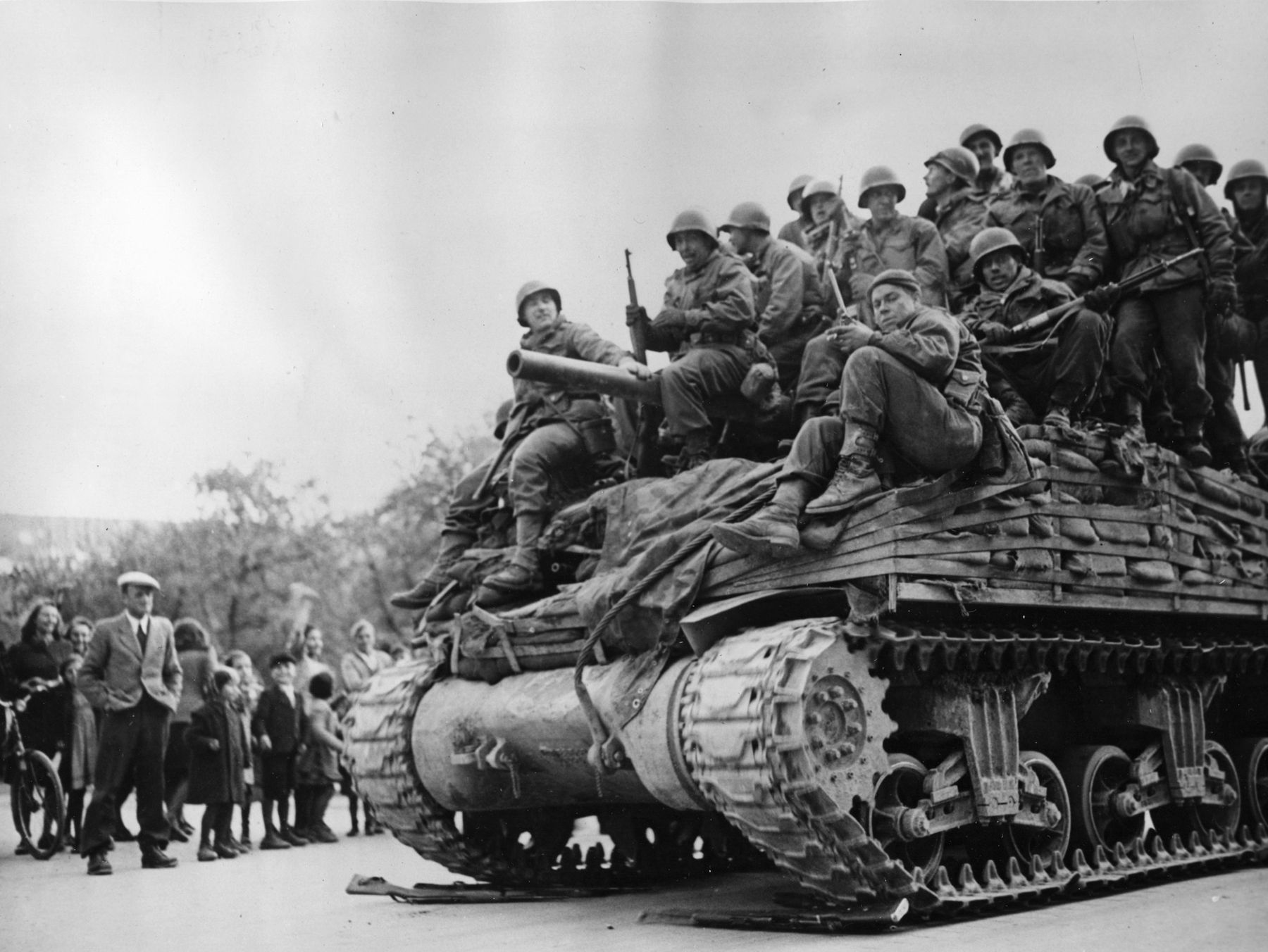
May 9 was a sunny, warm day, but the weather did little to cheer the many members of the division who had still to cross the river. “Will the Americans try to stop us?” was the question in everyone’s mind. As soon as Otto Kumm arrived in Steyr, he was driven to the local American headquarters, where the commander of the U.S. 71st Infantry Division took him to meet General Lothar Rendulic of Army Group South.
The 71st Divisional cavalry troop had captured Rendulic in Waidhofen the day before. Rendulic told Kumm that the Leibstandarte was to take up a position on the east bank of the Enns. This was tantamount to ordering him to surrender his men to the Russians. Kumm refused the order and told his units to cross “the Green border” anywhere they could, preferably to the south of Steyr. Some had to force their way across.
One participant in the crossing remembered, “At about 1200 hours we were in Losenstein where we discovered an intact stone bridge…. The Americans there refused to let us cross. With the help of several combat-ready tanks in the column, we [SS Colonel Max Hansen and the survivors of the 1st SS Panzergrenadier Regiment] crossed the Enns bridge, therefore the demarcation line, at 1400 hours without a fight…. During the evening, after the vehicles could go no further, we set them on fire. We continued marching to the west.”
Others, like Rolf Reiser with what was left of the tank group, took a long detour. He remembered, “Further movement in the direction of Steyr was impossible because of congestion, and the bridge there was supposedly blocked by the Americans. Also, the Soviets were advancing from Amstetten to Steyr to block the bridge on their side. We decided to take another route. The last four tanks were driven into the Enns and sunk. The 7th Company, approximately 60 men, drove in the opposite direction, to the south, into the mountains in the direction of Altenmarkt. Driving against all the traffic heading to Steyr, our progress was slow, especially since the road was narrow…. From Altenmarkt we took the road to the west and … reached the 1,050-meter high village of Winischgarten. There we made contact with the U.S. Army. A young American lieutenant behaved correctly—we were disarmed and all weapons turned over, but officers were allowed to keep their pistols.”
Not everyone was so fortunate. SS Lieutenant Vögler of Hansen’s 2nd Battalion, recalled, “In the smaller villages there were no sturdy bridges, only suspension bridges. These were overtaxed in the desire to escape Ivan. They broke and collapsed with all the men into the icy depths and the rushing waters of the Enns. What senseless and desperate actions! However, any exhortations and attempts to stop them were in vain.”
Unlike the majority of the troops of the Hitlerjugend who were placed under guard immediately after their surrender, many of those in the Leibstandarte were simply waved on to the west. In fact, from midnight May 8 to midnight May 11, the U.S. 71st Infantry Division recorded only 3,777 members of the Leibstandarte taken prisoner.
SS Lieutenant Pulvermüller described the hours after surrender. “The first POW Camp was in a meadow near Steyr. We were able to drive in the three available trucks about 30km outside the camp—the excuse being that we wanted to pick up our Waffen SS comrades and bring them to the camp. The residents in the towns we passed through could not believe their eyes—so many Waffen SS soldiers free, and after the capitulation! [After meeting the same U.S. patrol twice] our excuse no longer worked…. under escort they brought us back to Steyr.”
Joachim Peiper took advantage of this lax security to head for his home and family in Bavaria, but he was caught and arrested by an American patrol. His captors had no idea that he was soon to be branded “GI Enemy Number One.”
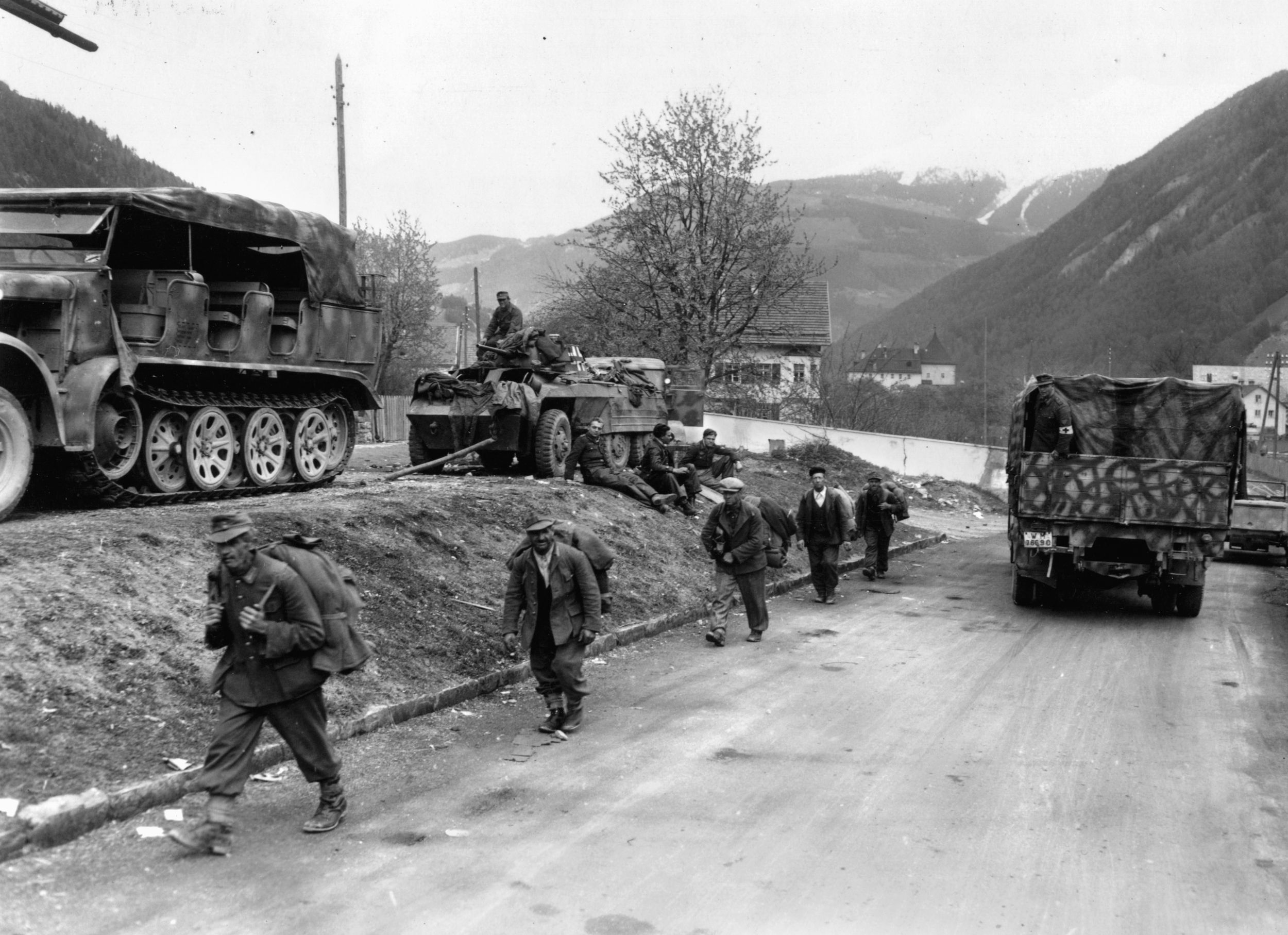
The same lack of control resulted in some actions by the surrendered men that were later regretted. SS Lieutenant Leidreiter of the reconnaissance battalion later recounted his experiences. “I had seen the massacred German company near Rovno [in the Soviet Union] in 1941. I knew of other stories like that. Therefore I had no trouble making my decision—captivity? Never with the Russians!…We reached the first bridge across the Enns south of Steyr [Losenstein] … On the other side there were two choices—to the north was the road to Steyr—that wasn’t even considered…. There were many burning vehicles, almost all carrying the sign with the Key [Leibstandarte]. Then came the bad time. We took off our uniforms…. The uniforms were burned with the VW. It was a wretched moment! There was a forested rocky slope in front of us…. The entire slope was swarming with German soldiers and civilians…. The higher we climbed the more we discarded from our heavy packs.
Leidreiter remembered meeting Max Hansen as much as two days later. “An officer with a Knight’s Cross, in full uniform…. The rest of us were going—whether into captivity or to another life—with some baggage, with a blanket, an overcoat or sack with shaving implements—not so Max Hansen. He climbed down the long slope, as always, proud, erect, as if he was going to report with his entire Regiment! … What a marvelous and honorable commander!”
And so, by one means or another, the officers and men of the Leibstandarte joined their comrades of the Hitlerjugend on the west side of the demarcation line during the 9th and 10th. Soon the vast majority of them would be behind wire, but some managed to escape custody. They, in order to avoid U.S. patrols and armed gangs of former concentration camp inmates intent on revenge, moved in small groups—mainly at night and through difficult terrain. By day they hid in woods, trusting nobody. Not all of them managed to get home, and most of those who did were soon picked up by the Allied military authorities.
And what of the first commander of the Leibstandarte and I SS Panzer Corps, Sepp Dietrich? On May 8, he went to a new headquarters at Zell am See 60 kilometers south of Berchtesgaden, known as OKW South. There he expected to meet its commander, General August Winter, but on arrival he learned of the capitulation and that Winter had gone on to Berchtesgaden.
Dietrich told his U.S. interrogators that he tried to follow Winter but that he and his wife were arrested by the Americans before he could do so. Since the place of arrest was Kufstein, some 70 kilometers west of the Berchtesgarten, the suspicion has arisen that he may have been trying to smuggle his wife into Switzerland. It is also strange that he made no effort to contact his direct superior, General Rendulic; however, in view of Rendulic’s directions to Kumm to stay east of the Enns, it may be that Dietrich suspected that he might be ordered to surrender his men to the Russians and decided to stay out of touch.
Although it would seem out of character for Dietrich to have deserted his men, the question has to be asked, why was he not in the Enns- Steyr sector to greet his “boys” in their most distressing hour? The U.S. sergeant from the 36th Infantry Division to whom Dietrich surrendered described his prisoner as “not anything like an army commander—he is more like a village grocer.”
Author Michael Reynolds is a retired major general in the British Army. He is a veteran of the Korean War and the former director of NATO’s Military Plans and Policy Division. Since retiring from the Army, he has written numerous well-received books on the subject of World War II, including The Devil’s Adjutant—Jochen Peiper, Panzer Leader, published by Casemate in 1997.
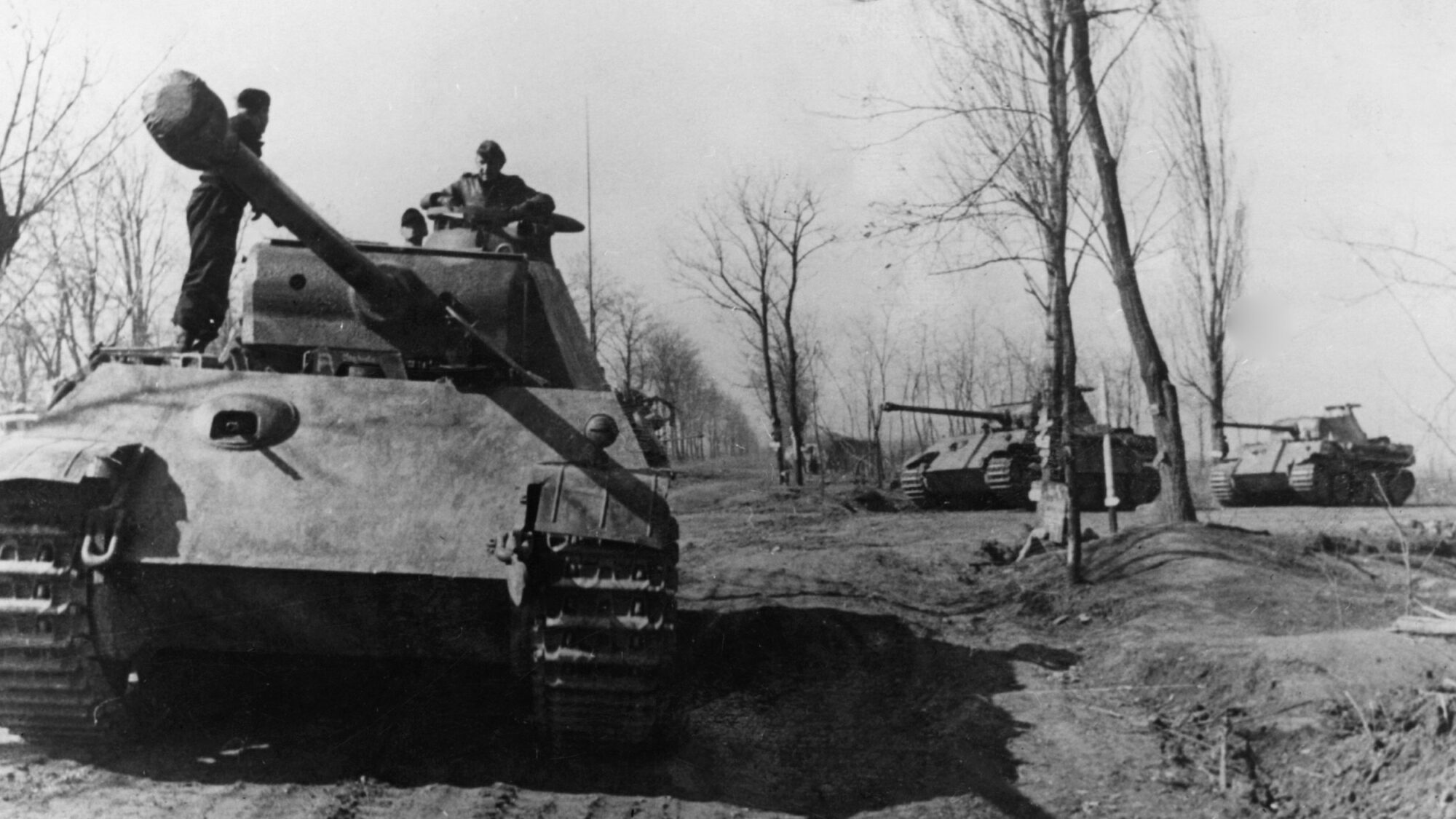
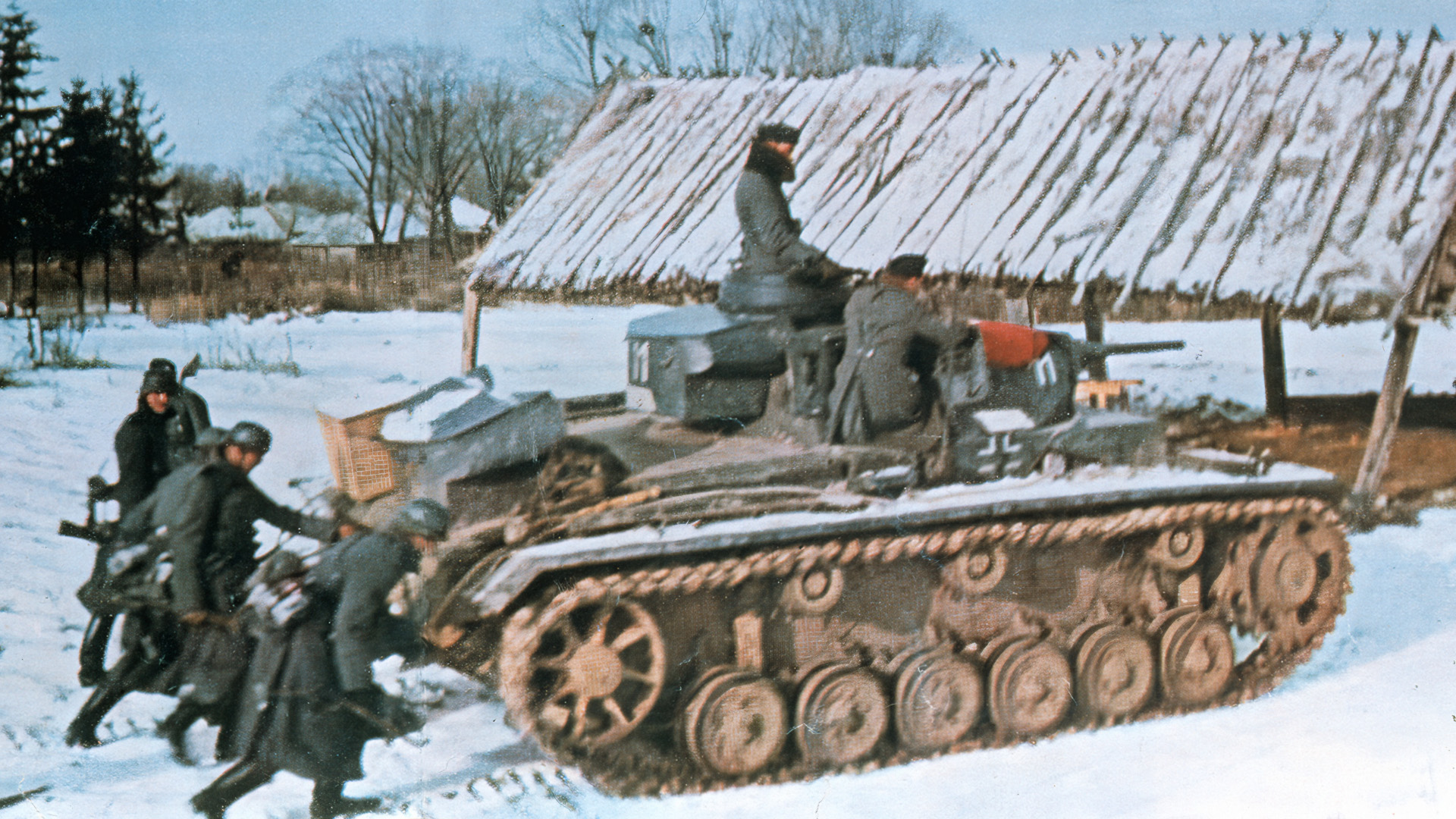
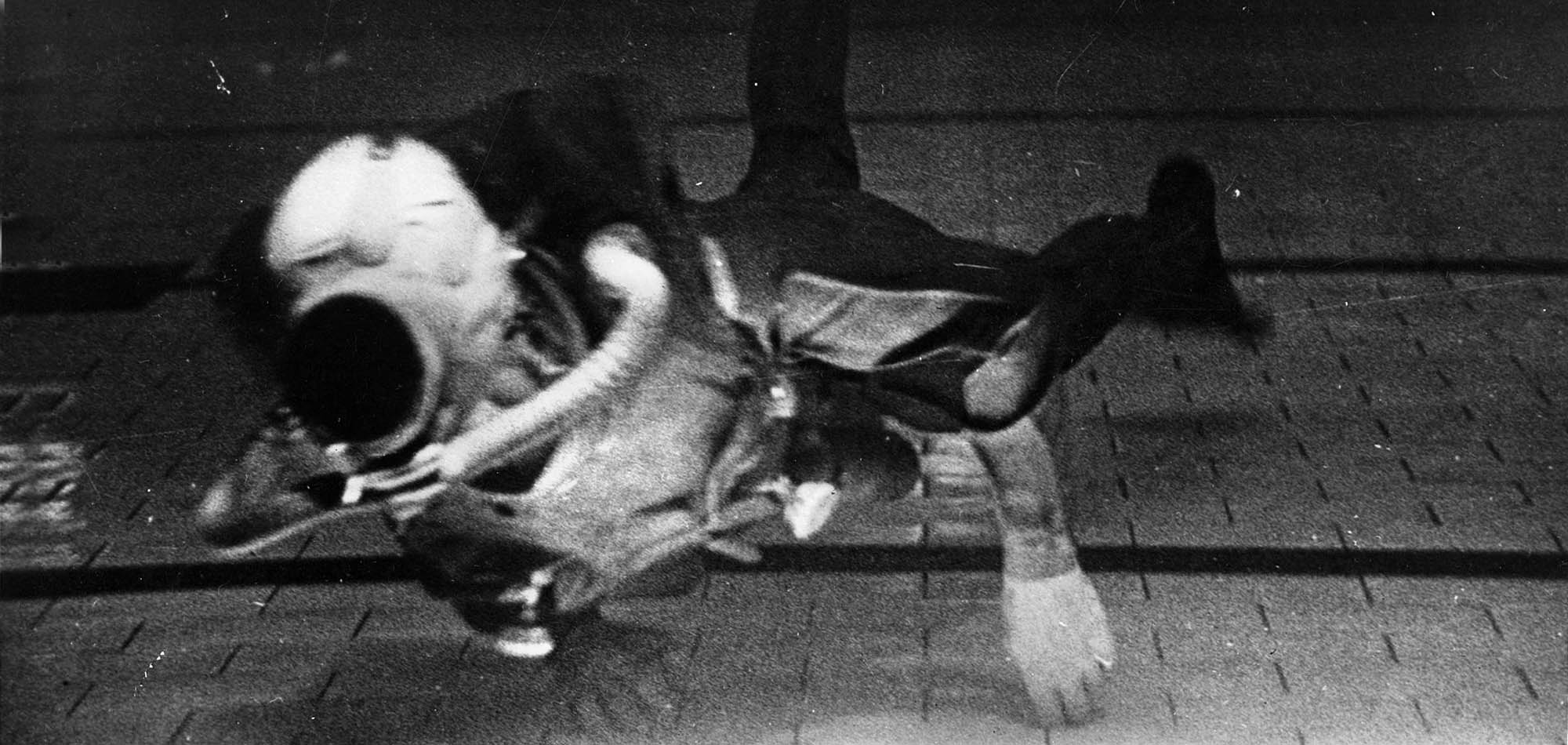
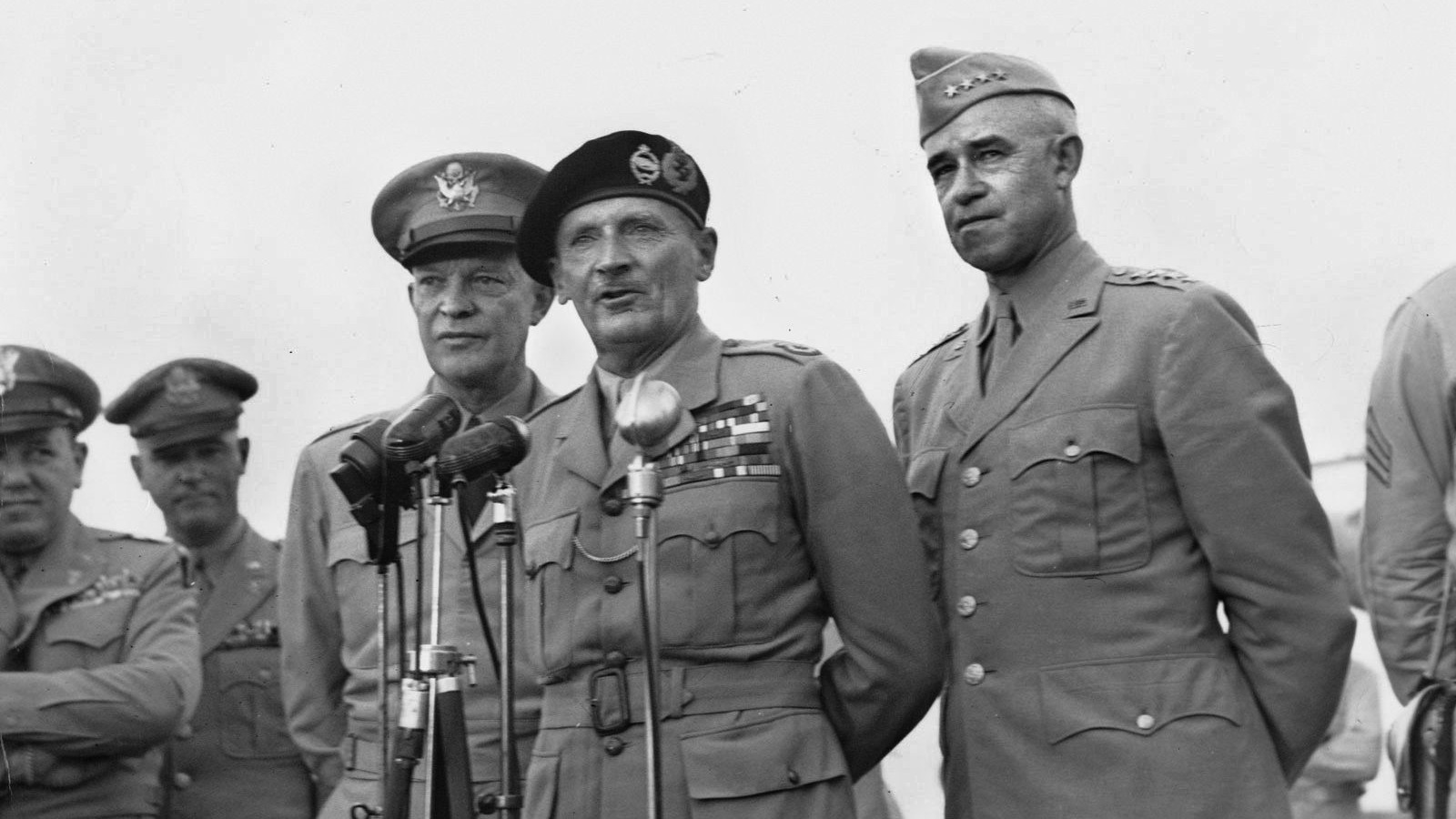
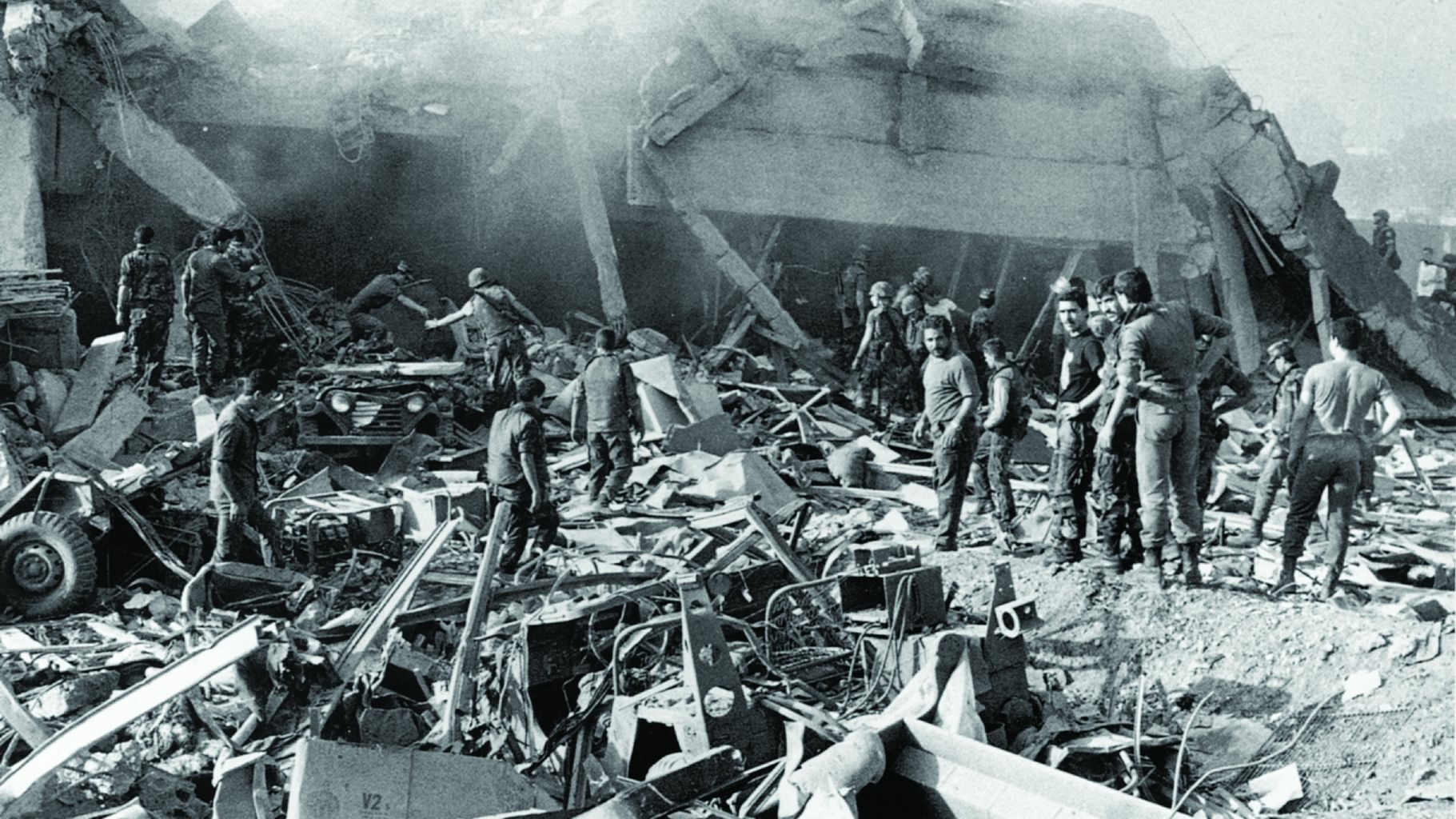
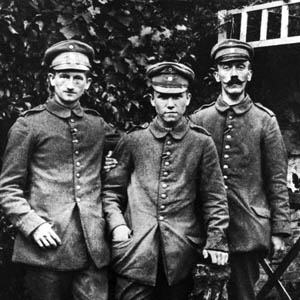
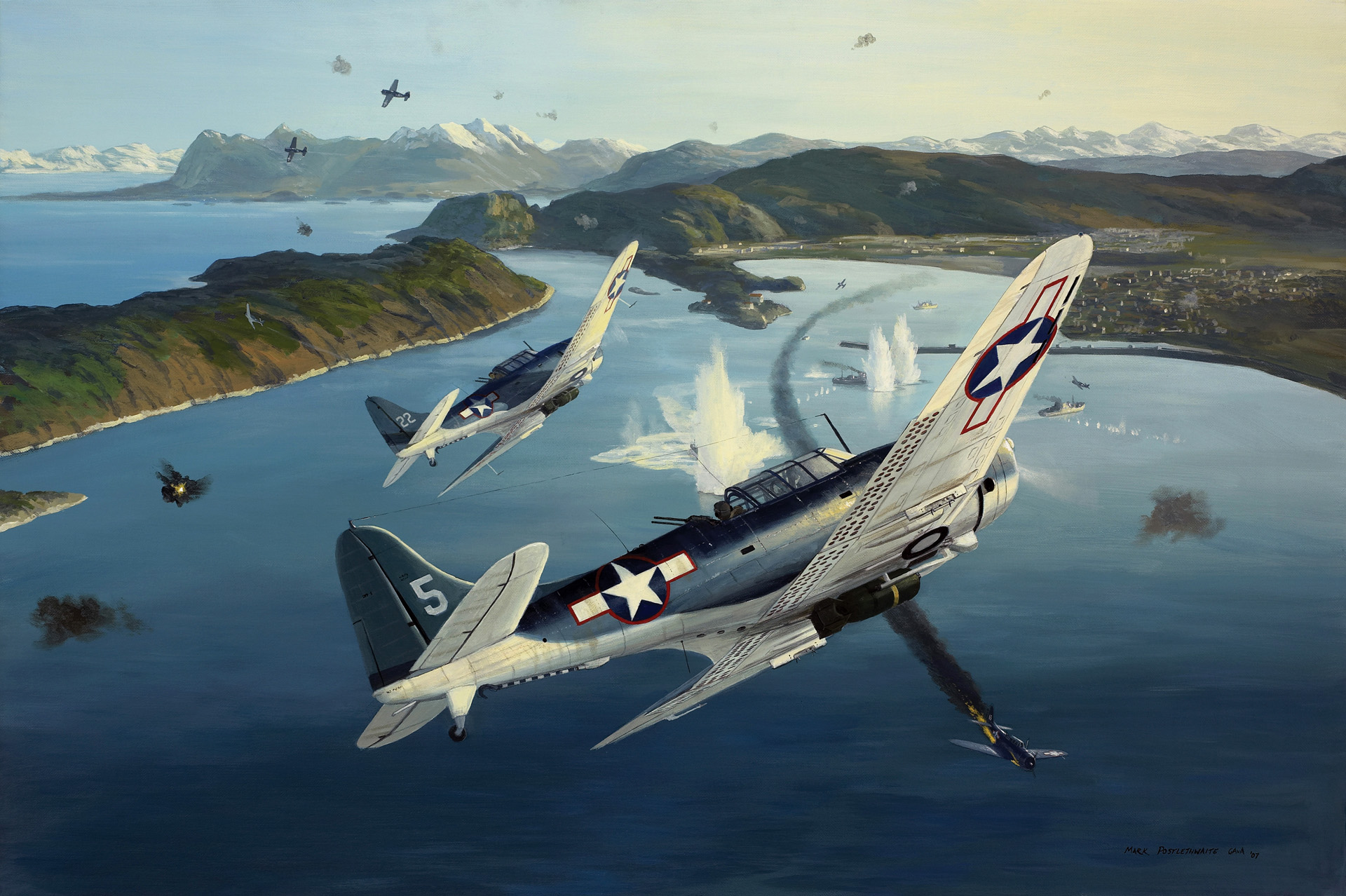
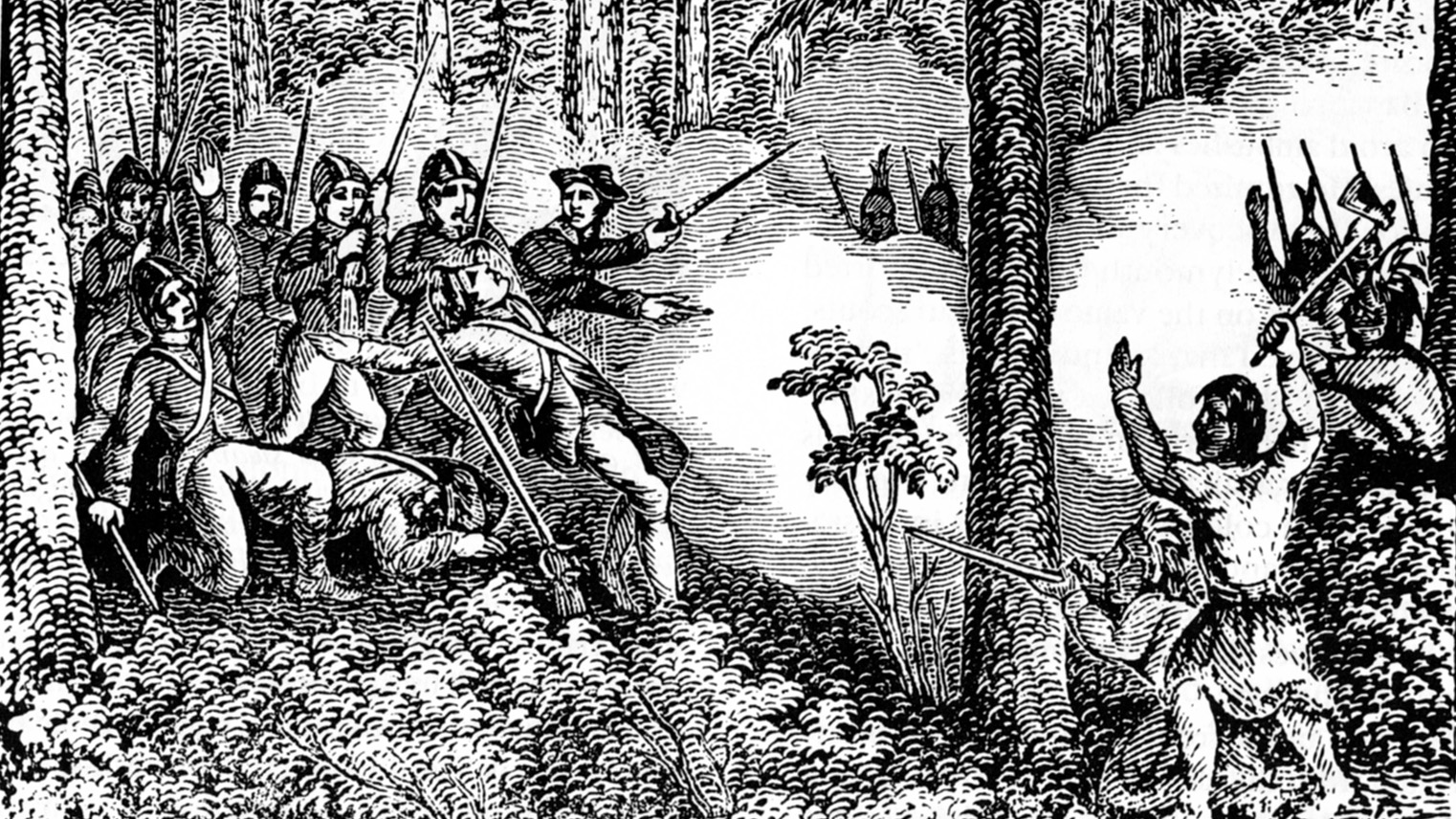
Join The Conversation
Comments
View All Comments